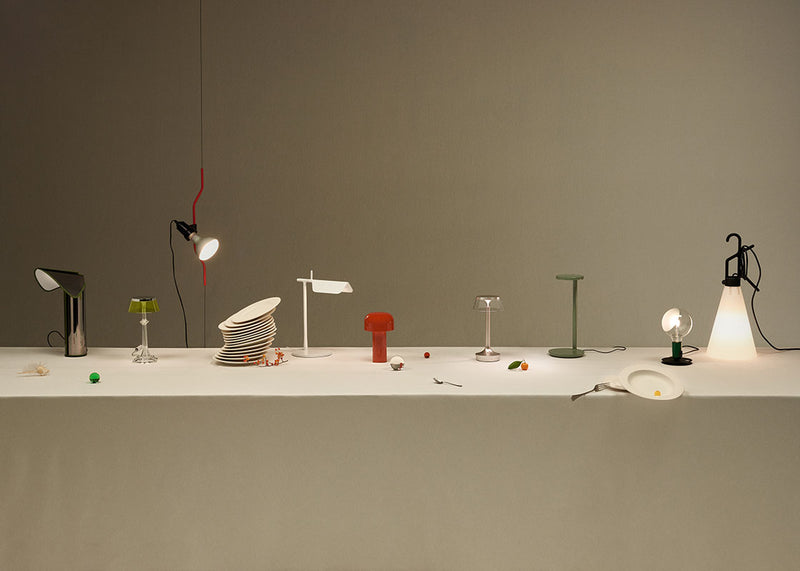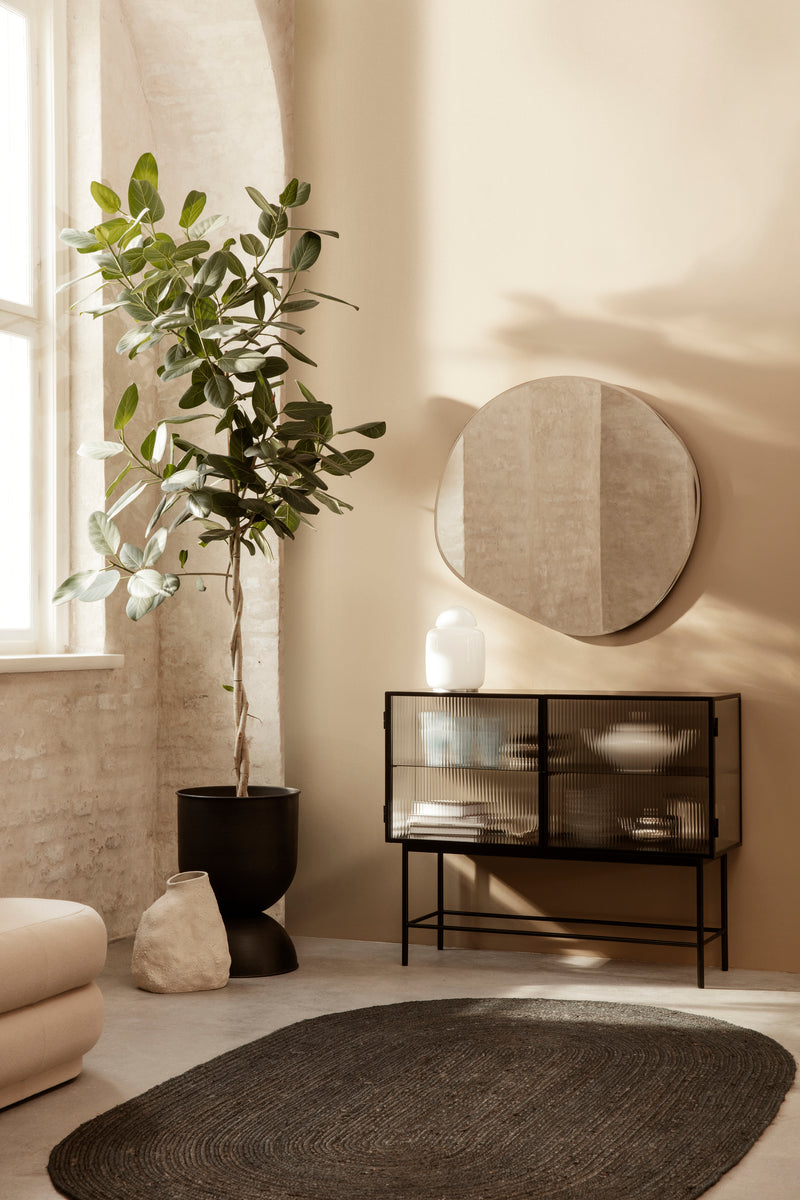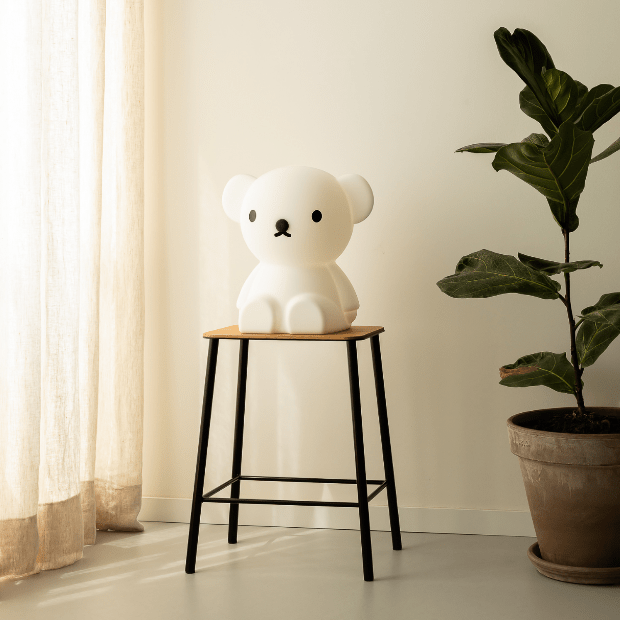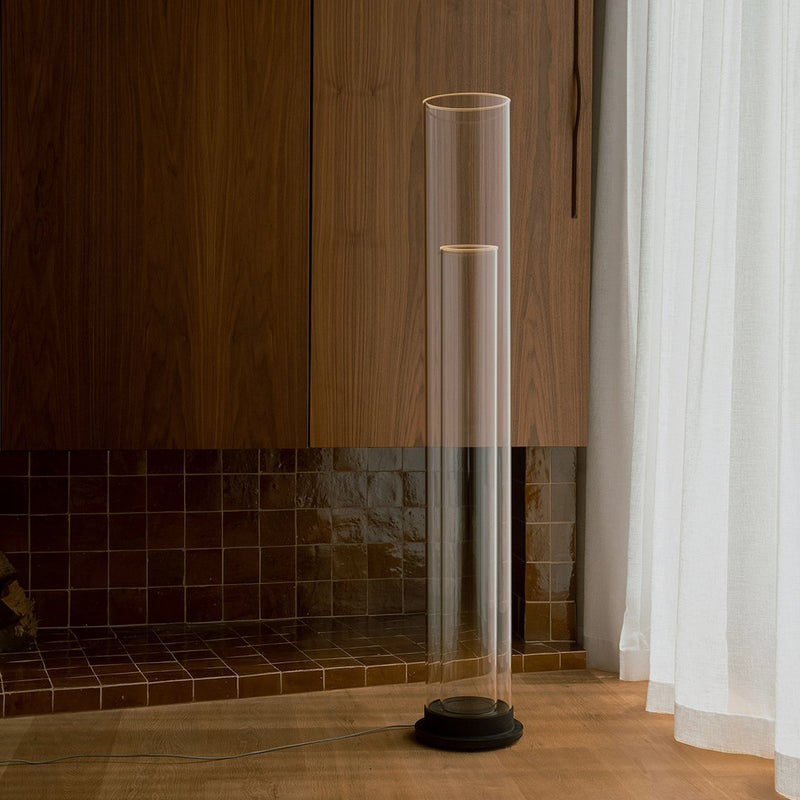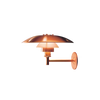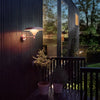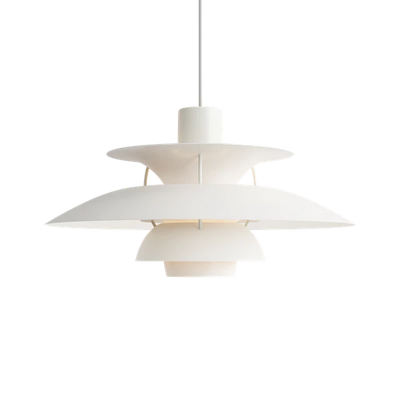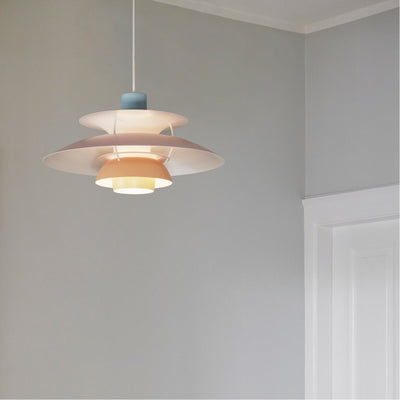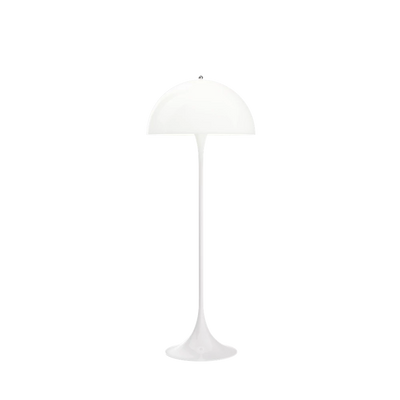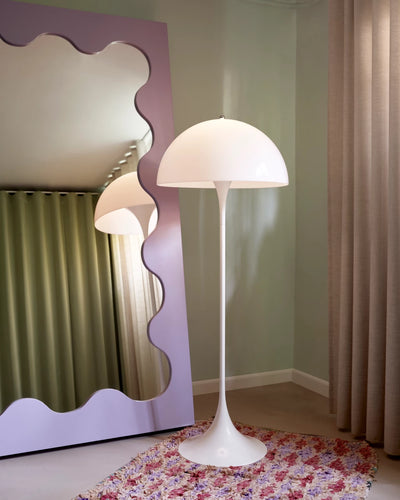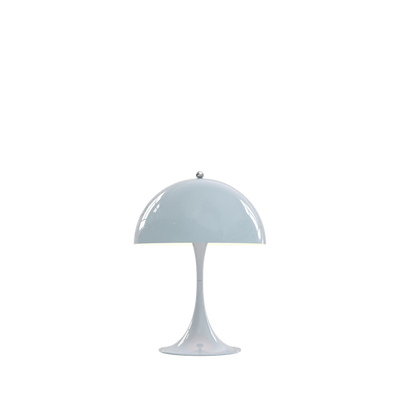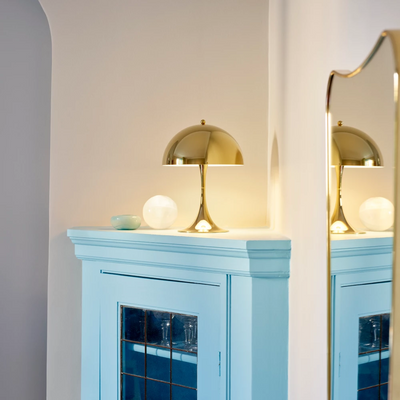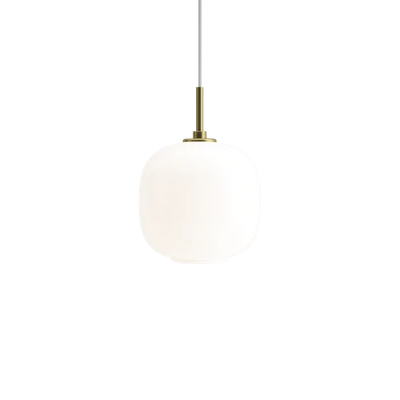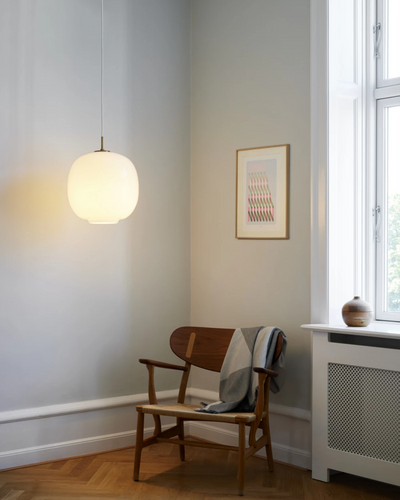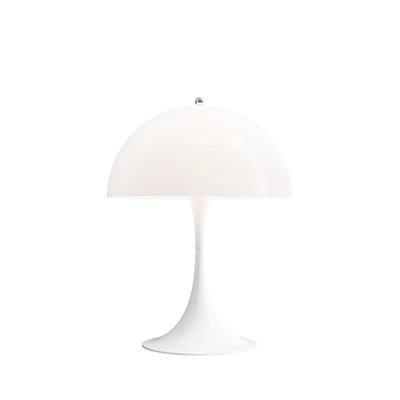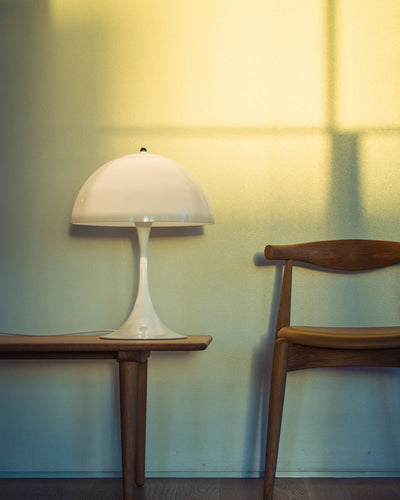Poul Henningsen designed the three-shade system back in 1925-1926. The first lights using the system were designed by PH in cooperation with Louis Poulsen for an exhibition in Paris. This partnership continued up until his death in 1967. Throughout his life, PH sought to create glare-free light, direct light where it was most needed, and create soft shadows, using incandescent bulbs as a light source. PH Wall is a member of the three-shade family which numbers 18 lights today, including three for outdoor use. Thus PH did not just design a light, but an entire system – around a thousand different models have been produced over the years. This wide selection consisted of table, floor and wall lamps, as well as a number of different chandeliers, which were very popular in the 30s for lighting private homes from high ceilings. There were countless combination options. The lights were available in different colors, as well as a range of sizes. The first shades were made of metal with a painted undersurface, such as white, gold or silver – depending on whether diffuse, warm or cold light was desired. Glass was later introduced for the three-shade system. In addition to the downward-directed light, glass lamps illuminated the room. PH was the first person to pursue a scientific approach to light and use the logarithmic spiral as a basis. By using a design based on the logarithmic spiral he achieved even distribution of light over the entire curve of the shade. This even light distribution, together with the diffuse reflection through the glass, made it possible to control glare and shadow. Each shade reduces the amount of light equally, due to their distance from the light source. The PH light model numbers refer to the shade size. Each top shade had a corresponding set of middle and lower shades. In the ‘pure’ models, such as the 2/2, the top shade has a size of about 20 cm, with corresponding lower shades. PH Wall consists of an approximately 45 cm top shade, but uses lower shades from the 3/3 model. These ‘hybrid’ models were introduced due to the desire to hang pendants at lower heights. The system was also used for wall, floor and table lamps. PH Wall was launched in 1966.
Light concept
The fixture is designed based on the principle of a reflective three-shade system, which directs the light downwards. The shades have a matte white painted inside to ensure diffuse, comfortable light distribution.
Materials & finish
Materials
Shades: Spun copper. Wall box: Spun copper. Arm: Copper.
Finish
Copper, brushed. Please note that the copper surface is untreated in order to achieve a verdigris finish over time. This can result in an inconsistent surface finish prior to the product achieving full patina. This process might have begun already during stocking/ transportation.
Size & measurements
Width x Height x Length (in.)
17.7 x 11.4 x 19.9 Max 10.9 lbs
Class & light source
cULus, Wet location.
E26
Mounting
Surface: Mounted directly to finished surface over a recessed 4” octagonal junction box. Requires three bolts on 5.2IN circle.
Information
Electrical: System Wattage: 15 W Delivered lumens: 735 lm Efficacy: 49 lm/W Certifications: cULus, Wet Location Protection class IP23 BUG Rating: B0-U1-G0 Controllability: Phase dimming Min.-Max. Ambient Temp: -20°C to +40°C Actual performance dependent upon screw-base lamp used.
Design
Poul Henningsen
